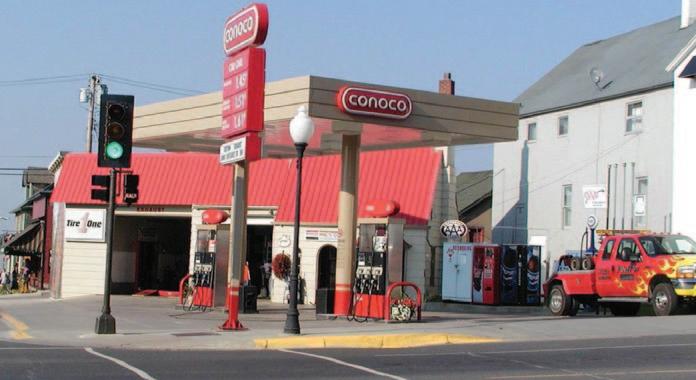
7 minute read
Noticing Inflation?
© Ely-Winton Historical Society In case you can’t read those prices, it says regular gas is $1.459
Money Memories
Remember when? Shopping has changed a lot through the decades, but even 30-somethings now have recollections of lower prices. It’s good to put the past year in perspective, though. Today’s octogenarians grew up in the post-Depression era with parents who became penny-pinching wizards, and these values were passed down through another generation or two. Here are some recollections from Elyites who have stories from their parents and grandparents, as well as their own thoughts comparing today’s shopping culture with past decades. Thanks to Ely-Winton Historical Society, we also have documentation from old issues of The Ely Miner.


My Dad used to talk about buying a turkey for a quarter. But then he followed it up by saying he only made a nickel an hour. Poultry doesn’t seem to have taken quite the same upturn in costs as most groceries. It doesn’t take five hours of work to earn enough for a turkey these days, although it might if the bird flu is bad. More likely, we’ll just have to eat tofurkey instead, raise our own, or hunt wild ones.
I remember when a package was full of whatever it held. Now the package is half empty, but it looks like you’re getting more than a smaller package of the same weight. But who looks at the weight? You just pick the big box. A waste of package materials.
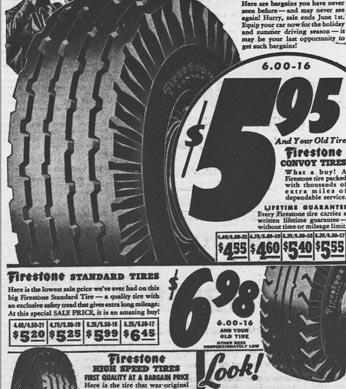
Candy bars were a nickel and they were bigger, but I only earned a quarter an hour for babysitting.
What I remember was how few choices there were compared to today’s grocery aisles. The toothpaste section took up about 8” on one shelf and it was Pepsodent or Crest. Period. And just a couple choices for toothbrushes. Do we really need a 25foot aisle 6 feet high with different kinds of cereal?
I remember my husband’s Grandma crying, saying “The price of bread is going to go to a dollar! What will we do?” This was in the 1970s when a loaf of bread had gone from 59¢ to 79¢. Grandma had emigrated from Slovenia, lived on whatever she could raise in her garden and chicken coop during the depression of the 30s, and was always panicked when prices went up. My mother-in-law baked bread for her and the rest of the family, and that was much cheaper.
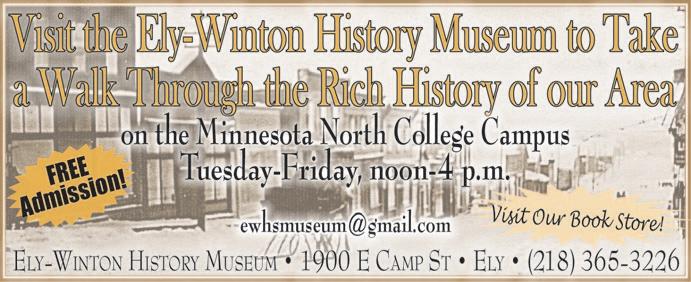
We have all this trouble with day care providers these days. 40 or 50 years ago there weren’t any day care centers in Ely. Women stayed home, or if they worked outside the home they had to find a friend or relative to watch their kids. I worked part time and a neighbor and my mother-in-law took the kids until my husband was home. That was just a couple days a week, though. .
Gas was 29¢ a gallon when I started driving. I remember when it got over $1 and they changed the speed limit to save gas. That was in the 70s.
I made it through college eating macaroni and cheese. You could buy 5 packages for $1. Sometimes we’d splurge and get a package of Jello for a quarter.
I saved and saved my allowance and babysitting money to buy this blouse I wanted for $4.99. They were called “angel blouses” and all the popular girls had one. It was made by Ship ‘n Shore – a quality brand in those days.
In 1963 I was a freshman in college, and you could get a 12 oz. Coke for 5¢, a Big Mac for 28¢. I went to a Beatles concert in 1966 for $4.50. In the 60s a pack of cigarettes was 35¢, and I could buy them for 25¢ at a place on my college campus. Smoking was thought to be safe, and 42% of adults smoked.
I went away to college out east in the late 60s. You could fly stand-by for $95 round-trip. I spent a lot of nights around Christmas break sleeping on airport benches waiting to get a flight.
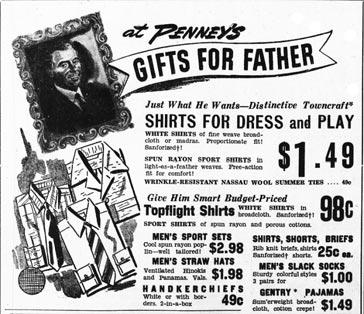

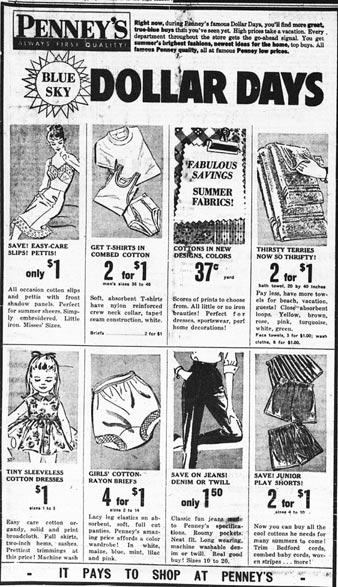

You know, today they have some flights almost that cheap if you want to go where they want to take you. But that doesn’t ever include Duluth.
My girlfriend taught me to sew, and then I could have the clothes I wanted and couldn’t afford. Once I had kids, I started making clothes for them, too, but then I discovered rummage sales. Ely has great rummage sales, and I liked keeping things out of the dump. Of course, I still had to buy tenners and boots. Ely kids wear theirs out.
In 1961 gas was 31¢ per gallon, and up to 1973 never exceeded 36¢. Then it started climbing and kept climbing. The gas stations were competitive with giveaways: Some stations gave trading stamps like S&H green stamps to save up in booklets to trade in for decent products. All the stations were full service. Without asking, they washed ALL your windows and asked if you wanted your oil or tire pressure checked. Most gas stations had mechanics on staff.
I went to Africa in 1986, and we stayed in lodges half the time and camped the other half. In the lodge gift stores there would be candy bars for sale in a glass case, and there would only be a few of them, such as 3 Hershey Bars and 2 Snickers along with some small packages of nuts. Coming home to our huge stores with long rows 4 shelves high of candy and 20-foot rows of hair products left me mentally stunned in culture shock.
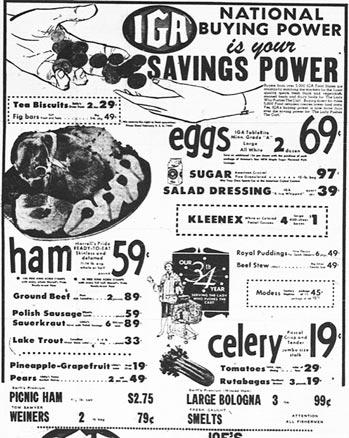
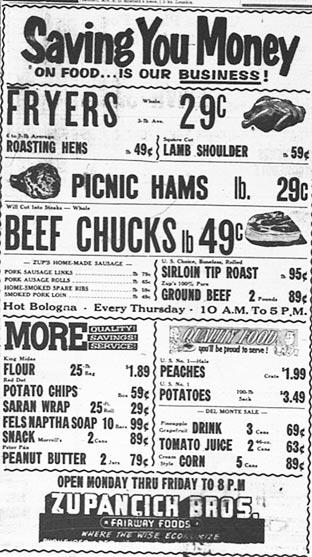
Les Deppe was born in the 1920s. He told us this story. “When I was a boy, my grandfather would buy a fivecent cigar on Saturday. On Sunday, he’d smoke half of it and save the stub. He pulled the stub apart on Tuesday which gave him enough tobacco for a couple of chews. Each evening he pulled the chew out of his cheek and dried it. Grandfather smoked the dried tobacco in his pipe on Friday evening. Saturday, he rolled the fresh cigar under his nose and tasted the tip in anticipation of his Sunday smoke.”
In 1972, as the first crew hired to work at the brand-new Sandy’s (a burger place), three of us took our stations at the registers while others stood by to scoop fries, bag burgers, and draw pop. Large Cokes were twelve ounces, smalls were six. The doors opened and a crowd surged in for the Grand Opening. I was happy but also nervous to ring up orders from my mom and dad and two of their friends. Later, Dad told me the guy they were with complained he had to move the pickle to find the burger in his sandwich. Dad’s response: “What’d you expect? You paid a quarter for it.”
Only big, young men ordered the quarter-pound hamburger. A large order of fries was usually shared by two people. Most people ordered what passes today as a kid’s meal: a single burger, small fry, and small pop. Our expectations and desires have supersized along with the portions and prices.
Those empty shelves during the early pandemic days! Made me think...
The staff at POTLUCK, Ely’s kitchenware store that buys and sells quality used and antique items along with classy new kitchen gadgets and assorted gifts, hear plenty of stories from their customers about old-time prices and practices.
Visitors often ask about prices of the antiques vs. new items. Comanager Kelsey welcomes these conversations. “They bring awareness to change: what has changed in the world, in retailing, and in the kitchen. And also what hasn’t changed, like the beauty of well-designed kitchen tools and the family recipes they are used to make.” Red-handled items like these rosette makers are classic and popular as antiques, but also available new. The single vintage model is $9, made in the US. The new double model, with 6 different patterns, is $49 with the handle made in China and the rosette forms made in the US, likely at the Nordic Ware plant in Minnesota. Whatever your experiences, this could be an enjoyable topic around your holiday dinner tables this season. It might help avoid political rancor, or at least provide an opportunity for © POTLUCK some intergenerational sharing. Happy Holidays!! Many thanks to all who contributed their recollections!












